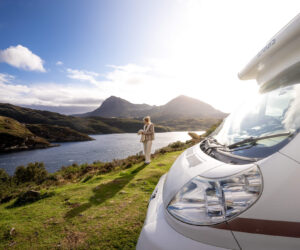Winter can be harsh on your motorhome, but with proper preparation, you can protect your investment and ensure that it stays in optimal condition for many seasons to come. In this comprehensive guide, we will walk you through the step-by-step process of winterising your motorhome.
From draining the water systems to sealing gaps and openings, we’ve got you covered. Let’s dive in and learn how to keep your motorhome cosy and safe during the winter months.
No time to read now? No problem, save a pin to your Pinterest board for later!
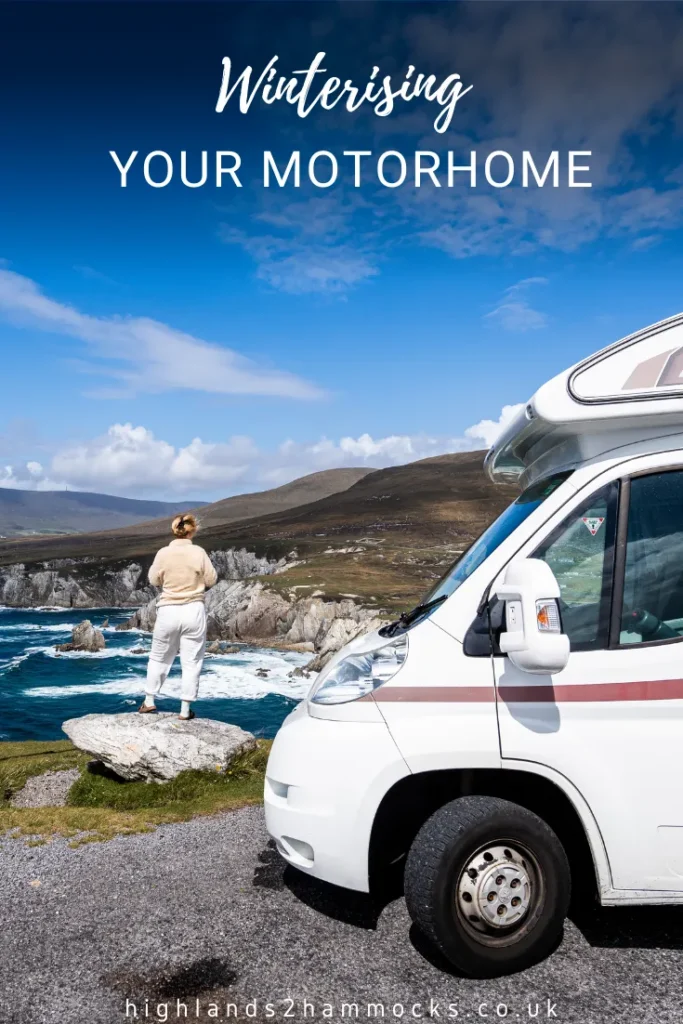
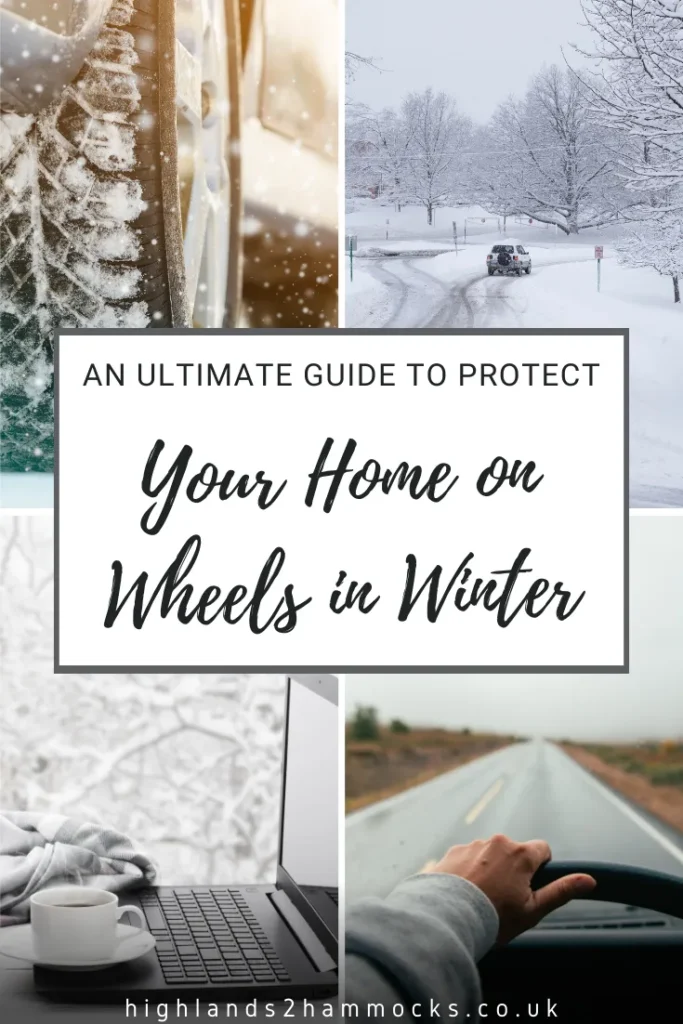
Winterising Your Motorhome
A Step-by-Step Guide
Table of Contents
Planning Your Trip
We use the below booking platforms to plan our trips. We hope you find them useful too!
Drain the Water Systems
The first step in winterising your motorhome is to drain the water systems. Start by turning off the motorhome’s water pump and disconnecting any water hoses or connections.
Next, open all of the taps and flush the toilet to remove any remaining water from the plumbing lines. Locate the drain valves for the fresh water and hot water tanks and open them to let the water drain out completely. This process will prevent any water from freezing and causing damage during the winter.
Draining the water systems is crucial because water expands when it freezes. If there’s any water left in the pipes or tanks, it can freeze and cause cracks or burst pipes, leading to costly repairs. By following this step, you’ll hopefully avoid any burst pipes!
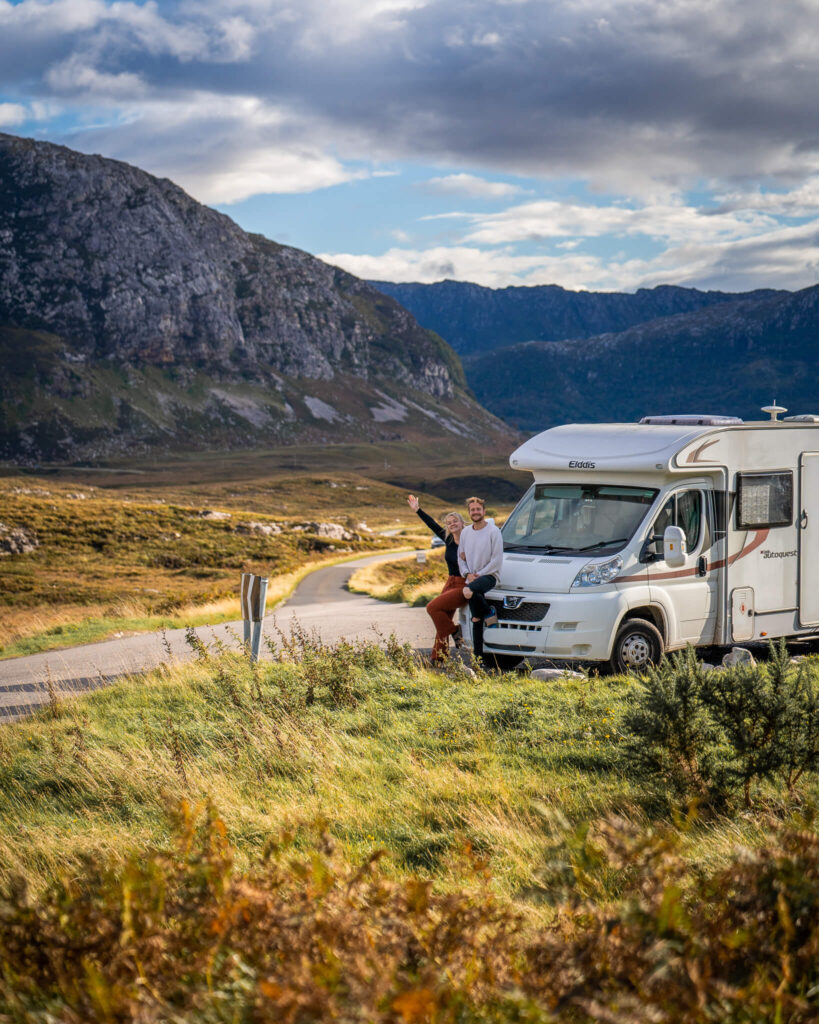
Bypass the Water Heater
Next, it’s important to bypass the water heater when winterising your motorhome. By isolating the water heater from the plumbing system, you can avoid potential leaks or damage.
Look for the bypass valve usually located near the water heater and follow the manufacturer’s instructions to divert the flow of water away from the heater. This step will protect the water heater from freezing and extend its lifespan.
Additionally, by preventing water from entering the heater, you reduce the risk of frozen and damaged components during the winter months.
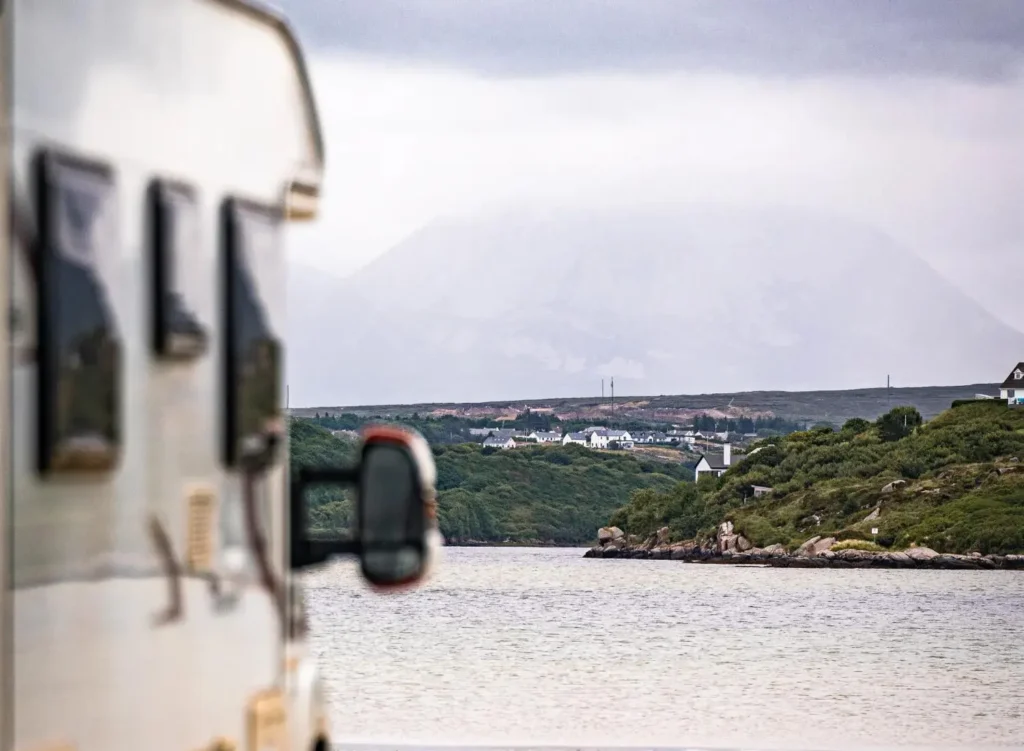
Drain the Holding Tanks
Properly emptying the grey water and black water holding tanks is essential to prevent odours and damage during the winter. Start by locating the drain valves for each tank and connect a hose to facilitate the drainage process.
Open the valves one at a time and let the contents flow out into a suitable disposal area or a designated dumping station. After all the tanks are empty, close the drain valves securely.
Draining the holding tanks ensures they are free of waste before winter, preventing unpleasant odours and potential damage from freezing. It’s crucial to empty these tanks completely to avoid any residues that could solidify, clog the tanks, or lead to foul odours when the motorhome is not in use.
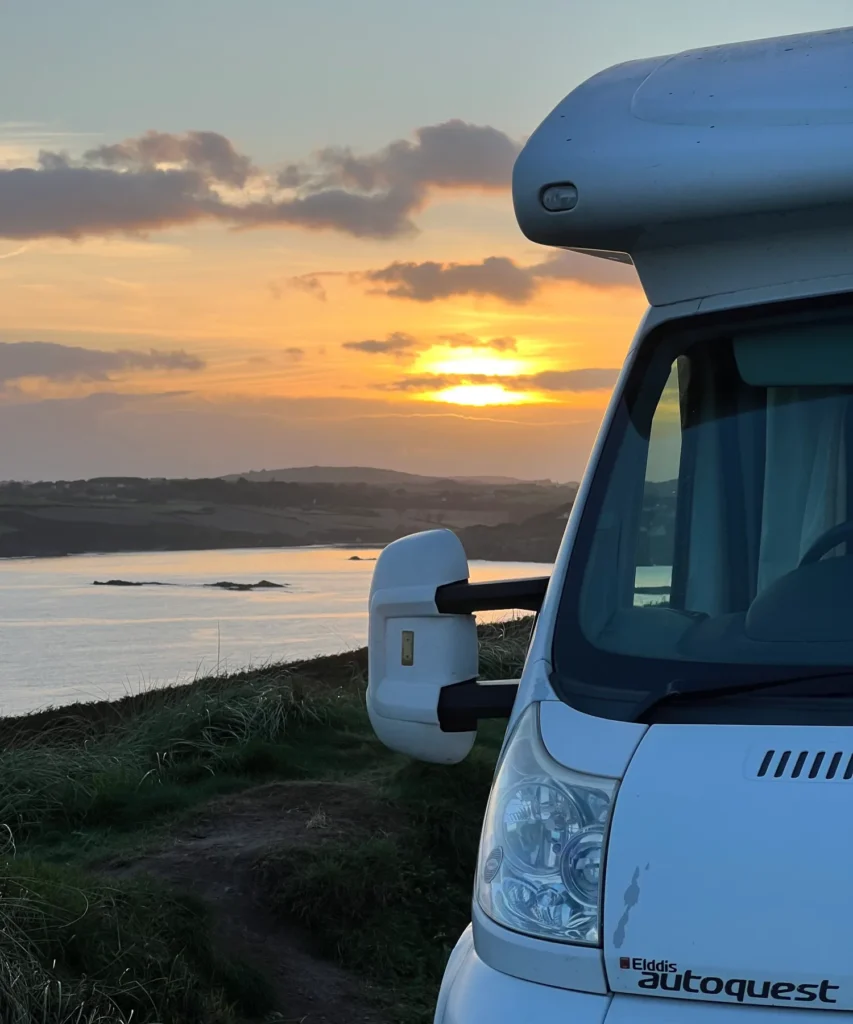
Protect the Batteries
Cold temperatures can drain your motorhome’s batteries, leading to potential damage and reduced lifespan. If you are not planning to use your motorhome over the winter months disconnect them and remove them from the motorhome if possible. Store them indoors in a cool and dry place, such as a garage or basement, to prevent freezing and prolong their life.
Before storing the batteries, ensure they are fully charged. Regularly check their charge levels during the winter and recharge them as needed. Additionally, disconnect any electrical connections to prevent parasitic draws that can drain the batteries over time. By taking these precautions, you’ll ensure that your batteries remain in good condition and are ready for use when you go on your next adventure.
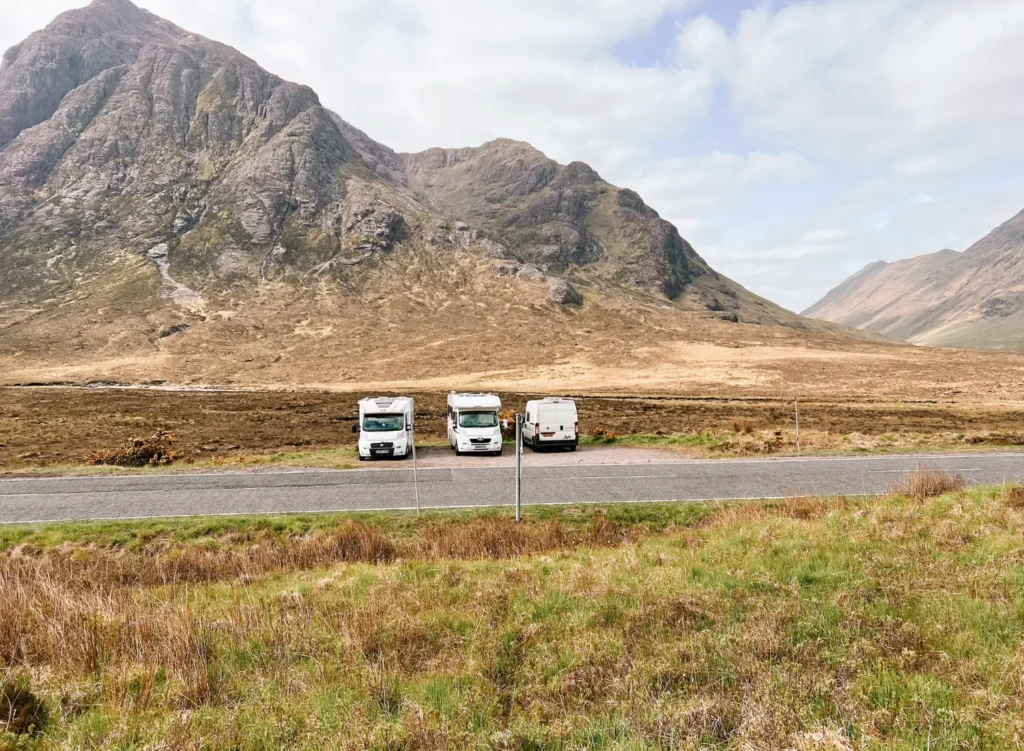
Seal Gaps and Openings
Keeping your motorhome draft-free is crucial for maintaining a comfortable interior temperature and preventing cold air infiltration. Begin by inspecting your motorhome for any visible gaps or openings around windows, doors, vents, and other potential entry points. Use draught excluders to seal windows and doors, preventing drafts and heat loss. Additionally, apply caulk to seal any gaps or cracks in the exterior walls, roof, or flooring.
Insulating your motorhome is another effective way to reduce heat loss and keep the interior warm. Consider placing insulation panels or foam board insulation in key areas such as the windows and skylights. This will help to create a barrier against the cold outside air and maintain a cosy environment inside your motorhome during the winter months.
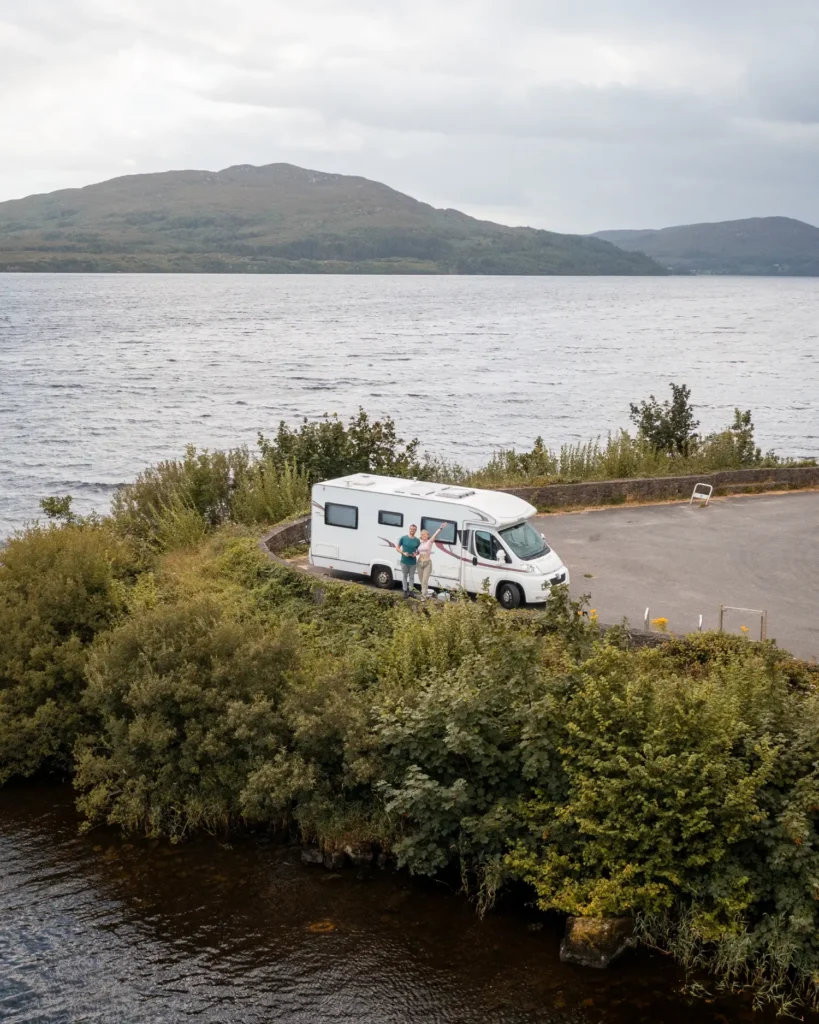
Remove Perishables
Before winterising your motorhome, it’s important to empty the refrigerator and pantry to prevent spoilage and the growth of mould or mildew. Start by removing all perishable items, including food, beverages, and any other items that could spoil or freeze.
Once the refrigerator and pantry are empty, clean them thoroughly using a mild detergent. Wipe down all surfaces, shelves, and drawers, ensuring that no food particles or residues remain. Leave the refrigerator door slightly ajar to allow air circulation and prevent mould or mildew growth.
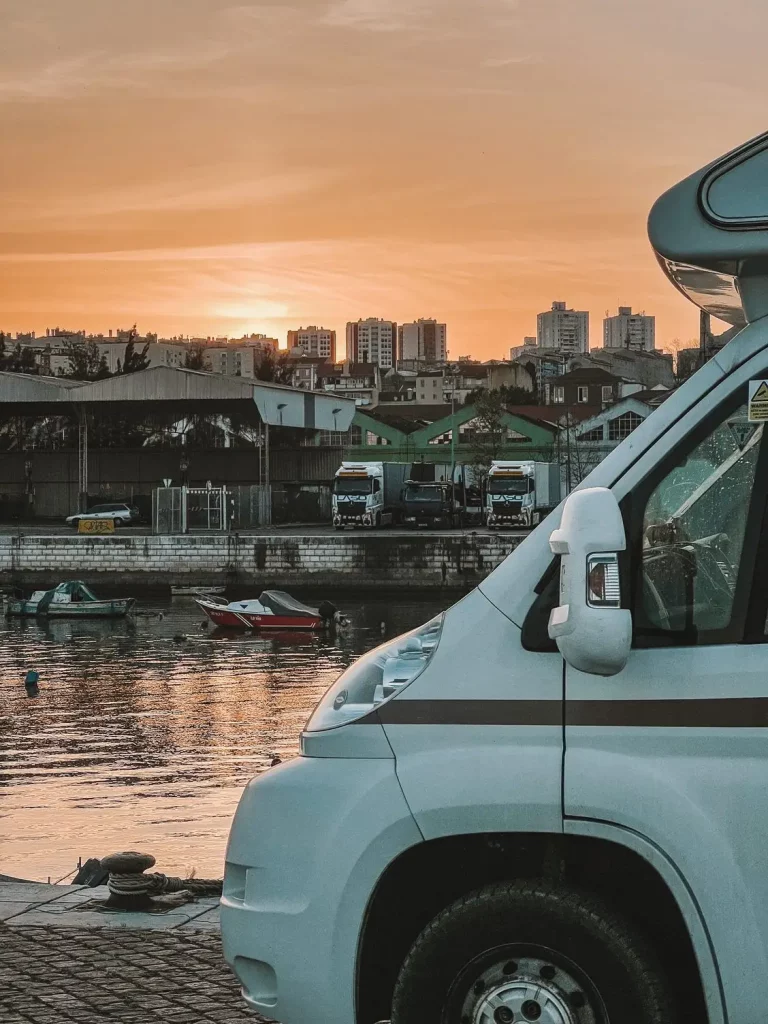
Cover or Store the Motorhome
In this section, we’ll explore the options for storing your motorhome during the winter. Deciding whether to store your motorhome indoors or use a motorhome cover depends on your specific circumstances and available resources.
If you have access to a climate-controlled storage facility, it’s the ideal option for storing your motorhome during the winter. Indoor storage protects your motorhome from extreme temperature changes, moisture, pests, and other potential hazards. This environment will preserve your motorhome’s exterior and interior, ensuring it remains in optimal condition for future use.
If indoor storage is not feasible for you, a motorhome cover can provide protection against the elements. Look for an RV cover that is specifically designed for your motorhome’s size and shape. A good-quality cover will shield your motorhome from rain, snow, UV rays, and debris. Make sure to install the cover securely, tightly fastening it to prevent wind damage. Regularly check the cover during the winter to ensure it remains in place and make any adjustments as needed.
Whether you choose indoor storage or an RV cover, remember to remove any aerials, solar panels, or other exterior accessories that could be vulnerable to damage or theft. This precaution will prolong the life of your motorhome and preserve its appearance.
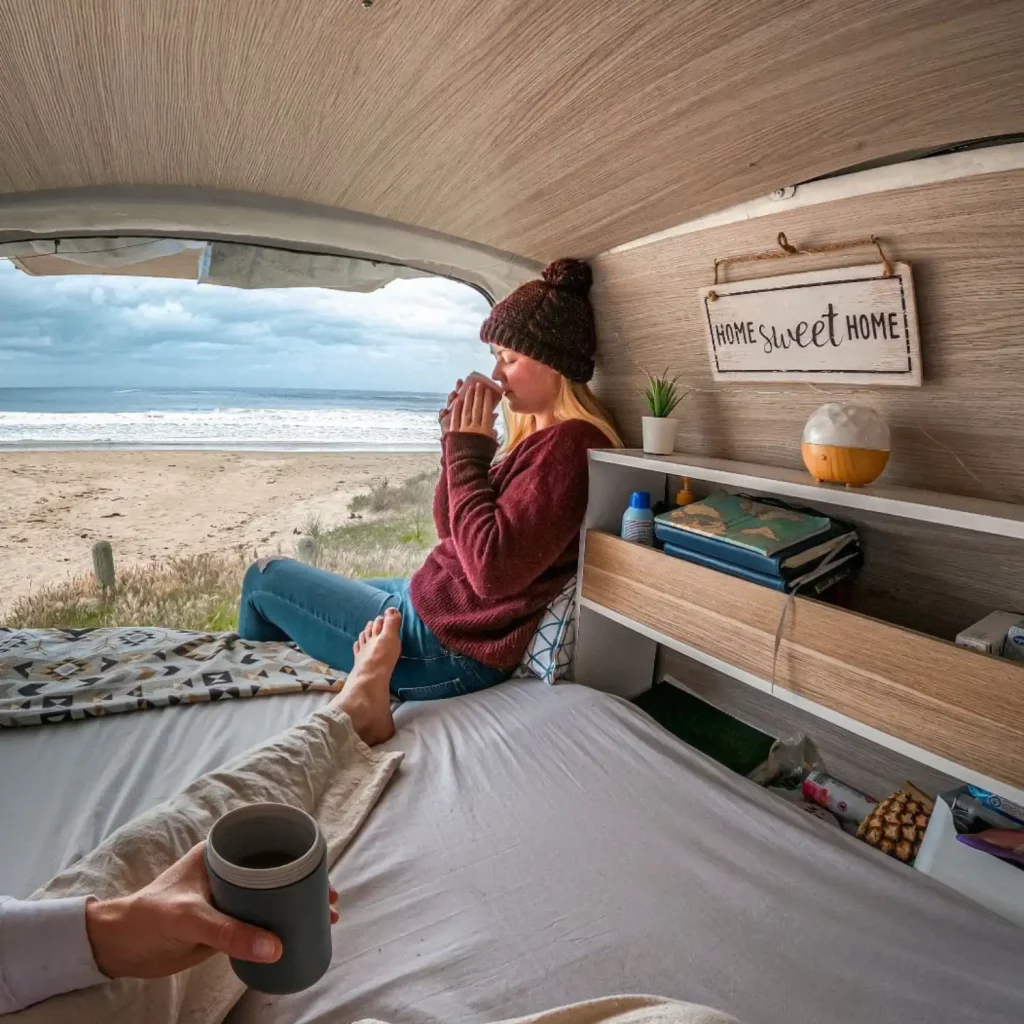
Tyre Maintenance
Proper tyre maintenance is essential for a safe and smooth journey. Start by checking your motorhome’s tyre pressure and inflate them to the recommended levels. Cold temperatures can cause tyre pressure to decrease, and low-pressure tyres can lead to poor handling and increased fuel consumption. Regularly monitor the tyre pressure throughout the winter and adjust as necessary.
Consider using tyre covers to protect your motorhome’s tyres during the winter. Tyre covers shield the rubber from UV rays, harsh weather conditions, and potential damage from debris or rodents. By using tyre covers, you’ll prolong the lifespan of your tyres and ensure optimal performance when you hit the road again in the spring.
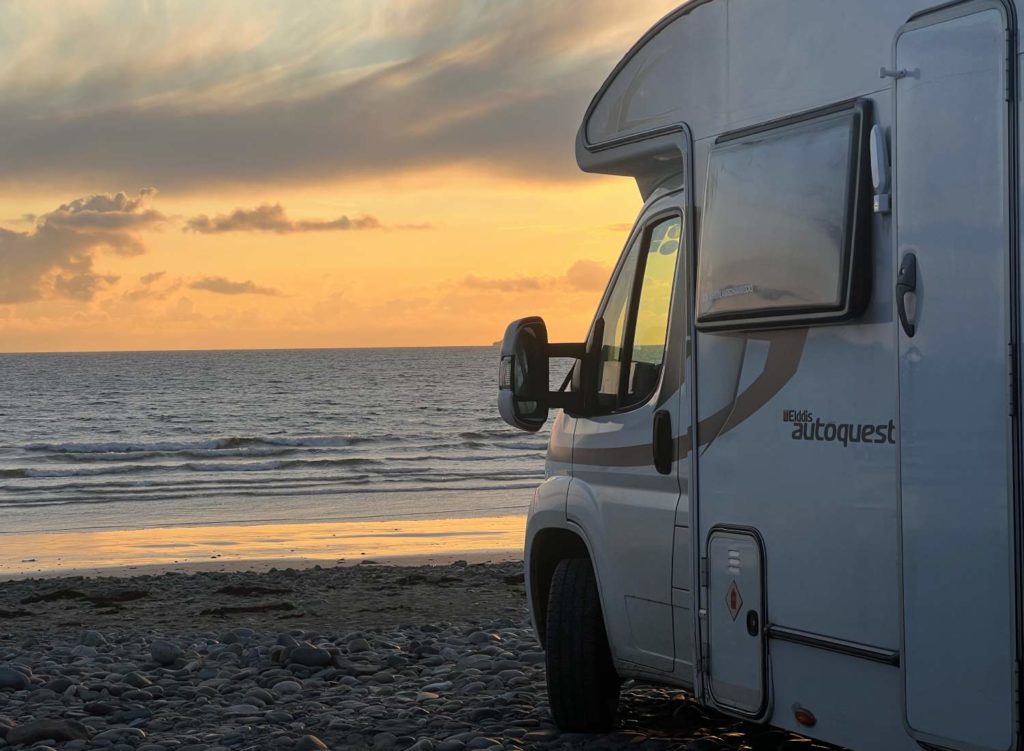
HVAC System Inspection
A well-functioning heating, ventilation, and air conditioning (HVAC) system is crucial for a comfortable interior during winter travels. Before winterising your motorhome, inspect the HVAC system thoroughly.
Start by checking the furnace. Ensure that it is clean and free from any debris or obstructions. Clean or replace the furnace filter (if it is an older gas system) if needed. Test the furnace to ensure it’s in good working condition and producing warm air.
Next, examine the vents and ductwork for any signs of damage or leaks. Make sure they are securely connected and properly sealed. Inspect the thermostat and replace the batteries if necessary.
Once the inspection is complete, run the HVAC system briefly to ensure it’s functioning properly. This will allow you to identify any potential issues before the winter season begins and make any necessary repairs or adjustments.

Pest Prevention
Pests can cause significant damage to your motorhome during the winter season. To prevent unwanted visitors and safeguard your motorhome, take steps to seal all openings where pests might enter. Inspect your motorhome thoroughly, paying attention to areas such as vents, windows, doors, and utility lines.
Use silicone-based caulk or draught excluders to seal any gaps or cracks. Install screens on vents and access panels to prevent pests from entering. Additionally, consider using pest deterrents such as mothballs or peppermint oil to further discourage pests from making your motorhome their winter retreat.
By taking these preventive measures, you’ll minimise the risk of pest infestations and the potential damage they can cause to your motorhome’s interior and systems.
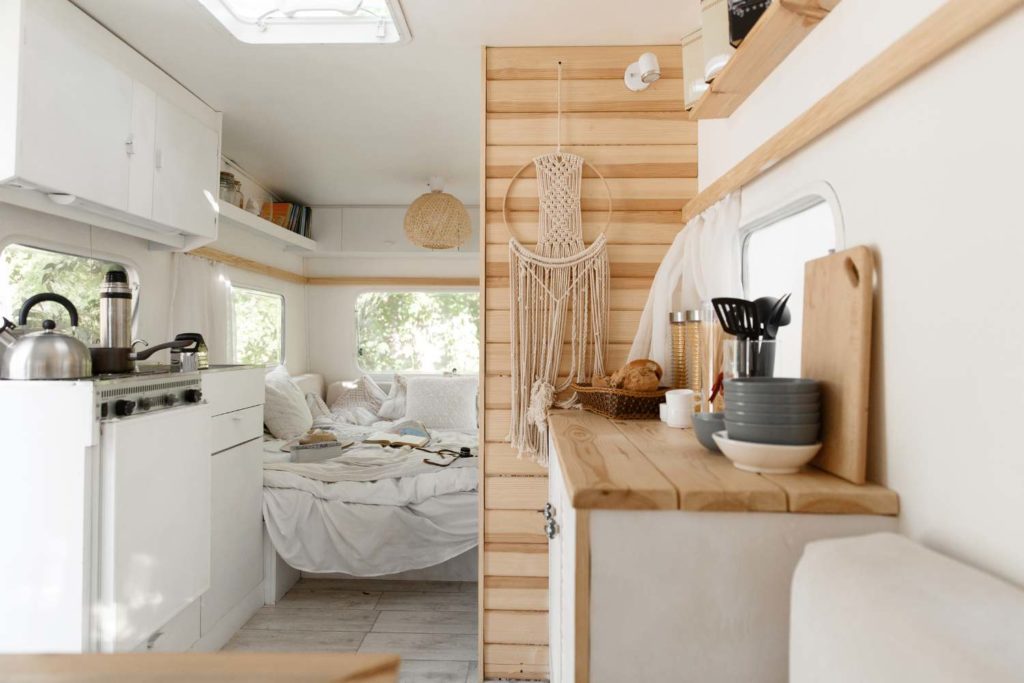
Regular Maintenance
Even during the winter season, regular maintenance is necessary to keep your motorhome in top shape. Follow the scheduled maintenance tasks recommended by the manufacturer to ensure that your motorhome is ready for the upcoming camping season.
This includes oil changes, filter replacements, and other checks specific to your motorhome. Regular maintenance ensures that all systems are in proper working order and helps identify any issues that may require attention before hitting the road again.
Carry out maintenance tasks according to the recommended intervals and keep a record of completed tasks. This will help you stay organised and ensure that your motorhome is always in optimal condition, ready for your next adventure.
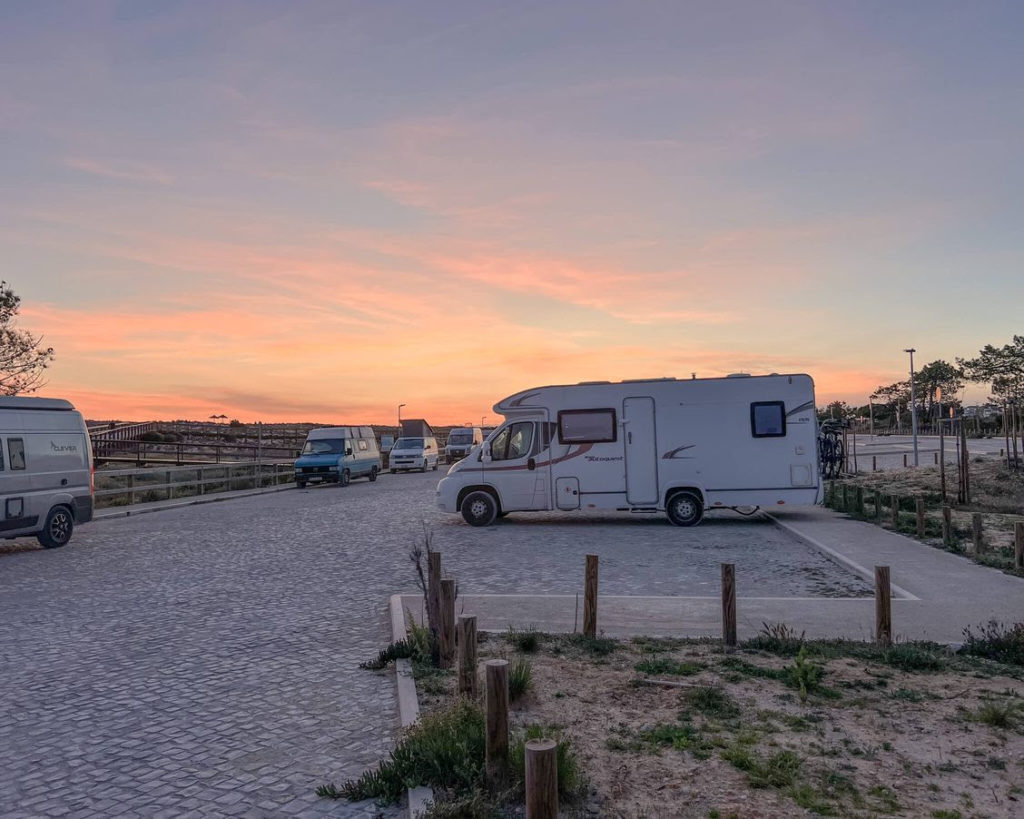
Winterising your motorhome is a vital step to protect your investment and ensure years of enjoyment on the road. Make sure you check your RV camping checklist before setting off on your trip. By following this comprehensive step-by-step guide, you can safeguard your motorhome from freezing temperatures, prevent costly damage, and maintain its condition for future adventures. Remember, proper winterisation is not a one-time task but a yearly routine that will keep your motorhome cosy and safe throughout the winter months. Stay proactive and enjoy worry-free travels during the coldest seasons.
Remember to implement these steps and refer back to this guide whenever you need to winterise your motorhome. Safe travels and happy winterising!
Pin it for later!


